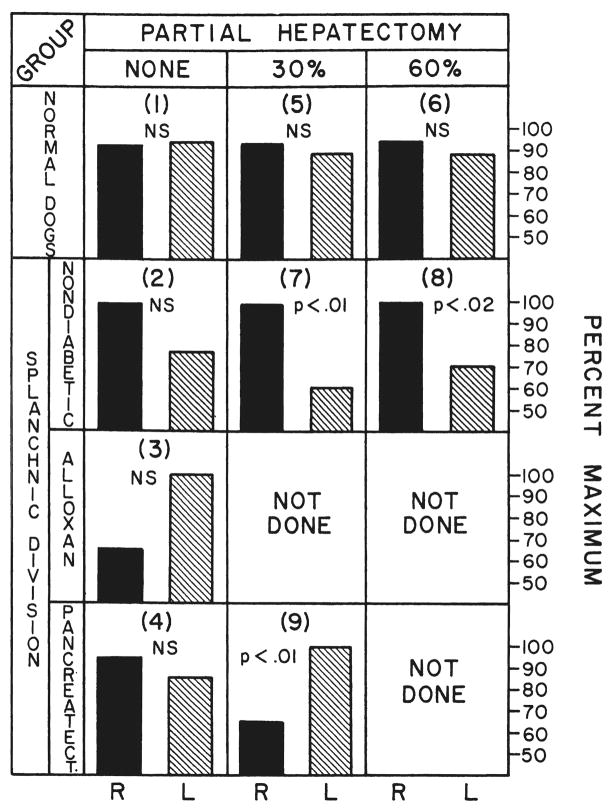Fig. 6.
Relative thymidine uptake of the right, R, and left, L, liver lobes after splanchnic division. In each experiment, the liver lobe side having the greater specific activity was assigned a value of 100 per cent and a proportionally lower percentage calculated for the other side of the liver. The numbers in parentheses correspond to the dog groups described in the section on methods. Statistical comparisons between the right and left lobes in each group are indicated by p values or by NS, not significant. For comparison, the results are given in the top row from the normal dogs of group 1 and the dogs of groups 5 and 6 after hepatic resection. Note that the advantage in thymidine uptake enjoyed by the right lobes which received pancreaticogastroduodenosplenic blood after splanchnic division in groups 2, 7 and 8 was abolished in groups 3 and 4 or even transferred to the left lobes in group 9 by the creation of diabetes, either with alloxan or by pancreatectomy.

